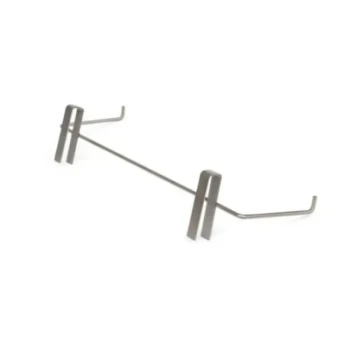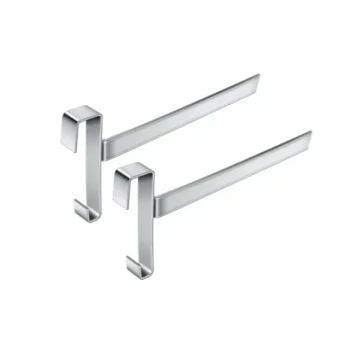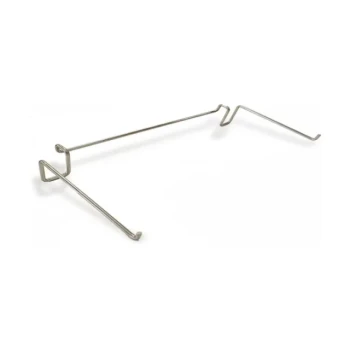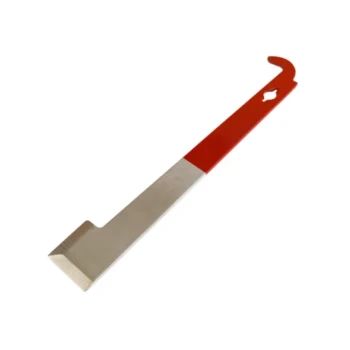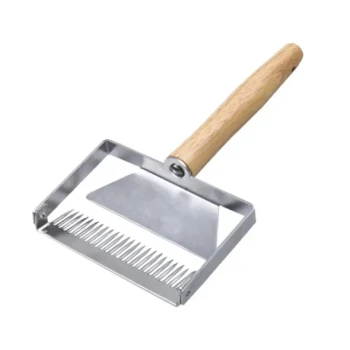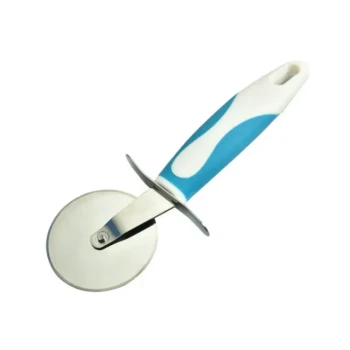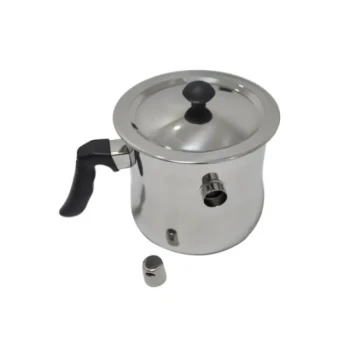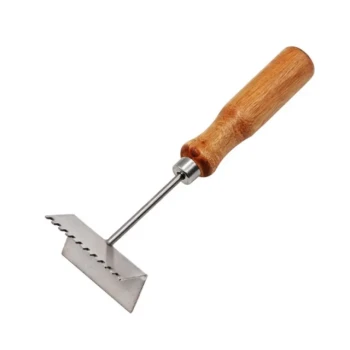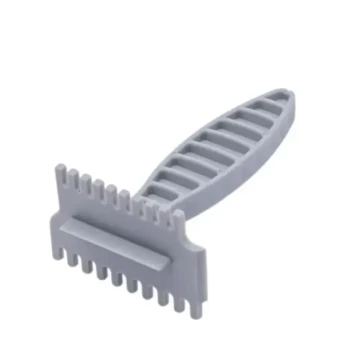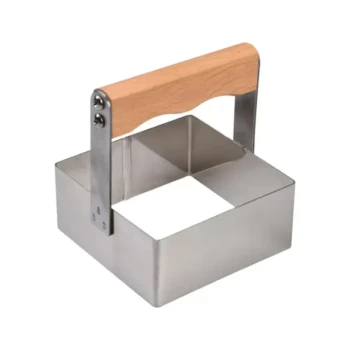At its core, a beekeeper’s protective clothing consists of a veil, a suit or jacket, and gloves. This gear is designed to create a physical barrier between the keeper and the bees, preventing painful stings and allowing for calm, confident work within the bee yard.
The purpose of protective beekeeping clothing is not just to prevent stings, but to foster a safe and effective working environment. The right gear allows a beekeeper to remain calm and focused, which in turn keeps the bees calmer and the entire experience safer for everyone involved.
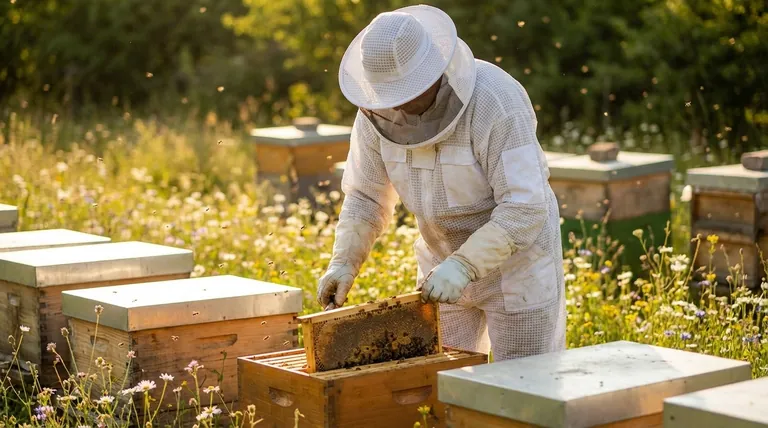
The Core Components of Beekeeper Protection
Protective gear is a system where each component serves a specific function. While a full suit offers the most coverage, many beekeepers mix and match components based on the task and the temperament of the hive.
The Veil and Hat: Your First Line of Defense
The veil is arguably the most critical piece of equipment. It protects your face, neck, and head, areas that are both sensitive and common targets for defensive bees.
Most modern veils are integrated into a hat or are attached directly to a suit or jacket. They are designed to keep bees a safe distance from your skin while providing maximum visibility.
The Bee Suit vs. The Bee Jacket
A full bee suit is a one-piece garment that covers you from your ankles to your wrists and neck. It offers the highest level of protection by eliminating any gaps where bees could enter, such as at the waistline.
A bee jacket is a popular alternative that provides protection for the entire upper body and typically includes an attached veil. Beekeepers pair a jacket with thick pants (like denim jeans) for a more flexible and cooler setup suitable for quick inspections.
Gloves: Protecting Your Hands
A beekeeper's hands are in constant motion and closest to the bees, making gloves essential. Beekeeping gloves are typically made of leather or thick rubber to prevent stingers from penetrating the material.
They often feature long sleeves, called gauntlets, that extend up the forearm to cover the gap between the glove and the suit's sleeve.
Footwear and Leg Protection
Bees can crawl, and they often end up on the ground during an inspection. It is crucial to wear closed-toe shoes, with boots being the ideal choice.
Tucking your pants into your boots or using boot bands ensures there is no gap for a curious bee to crawl up your leg.
Understanding the Trade-offs
Choosing beekeeping gear involves balancing total protection against comfort and dexterity. What works for one person or hive may not be ideal for another.
Protection vs. Ventilation
Thick, heavy suits made of cotton or canvas offer excellent sting protection but can become extremely hot. Ventilated suits, which use multiple layers of mesh, are a modern alternative that provides both protection and significantly better airflow.
Dexterity vs. Sting-Proofing
Thick leather gloves offer the best protection but can make it difficult to handle frames and equipment delicately. Some beekeepers opt for thinner gloves to improve their dexterity, accepting a slightly higher risk of an occasional sting.
Experience and Hive Temperament
A seasoned beekeeper working with a notoriously calm colony might only wear a veil and light-colored clothing. A beginner, however, should always opt for full protection to build confidence and ensure safety while learning.
Making the Right Choice for Your Goal
Your selection of gear should align directly with your experience level, climate, and beekeeping philosophy.
- If your primary focus is maximum safety as a beginner: Choose a full, light-colored, ventilated bee suit with an integrated veil and durable leather gloves.
- If your primary focus is flexibility for quick hive checks: A high-quality bee jacket with an attached veil, paired with thick jeans and boots, offers an excellent balance of protection and convenience.
- If your primary focus is working in a hot climate: Invest in a fully ventilated suit or jacket to prevent overheating, which is a safety risk in itself.
Ultimately, the right protective clothing empowers you to be a better, more observant, and more effective steward of your hives.
Summary Table:
| Component | Purpose | Key Features |
|---|---|---|
| Veil & Hat | Protects face, neck, and head. | Integrated design, maximum visibility. |
| Bee Suit | Full-body protection. | One-piece, covers ankles to wrists. |
| Bee Jacket | Upper body protection. | Flexible, often includes attached veil. |
| Gloves | Protects hands and forearms. | Leather or rubber, long gauntlets. |
| Footwear | Prevents bees from crawling up legs. | Boots, tuck pants in or use boot bands. |
Ready to suit up with confidence?
At HONESTBEE, we supply commercial apiaries and beekeeping equipment distributors with high-quality, durable protective gear designed for safety and comfort. Our wholesale-focused operations ensure you get the reliable equipment you need to protect your team and work effectively with your hives.
Contact HONESTBEE today to discuss your beekeeping supply needs and get a quote!
Visual Guide
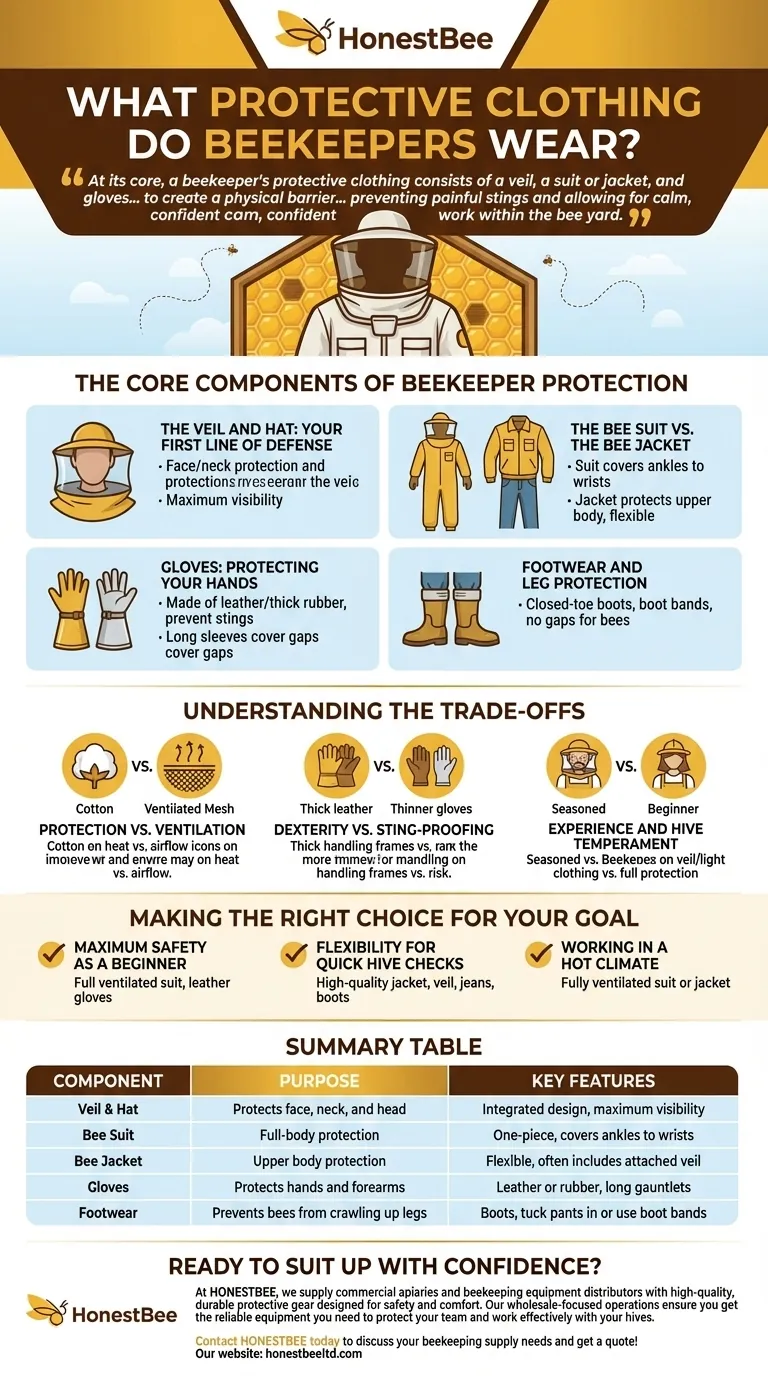
Related Products
- 3 Layer Mesh Vented Sting Proof Beekeeping Suit with Hat and Veil
- Vented Beekeeping Jacket with Hood and Veil for Beekeepers
- Cotton Beekeeping Suit and Round Hat with Veil Bee Keeper Protective Gear
- Heavy Duty Cowboy Beekeeper Hat with Visibility Veil Outdoor Professional Beekeeping Protective Gear
- Beekeeper Cowboy Hat and Veil for Beekeeping
People Also Ask
- What are the benefits of a fully ventilated beekeeping suit? Stay Cool and Protected in Hot Climates
- What features should be considered for sting protection in a beekeeping suit? Ensure Total Safety and Comfort
- Why do beekeepers wear suits? Essential Protection for Hive Management
- What should be worn under beekeeping protective clothing? Maximize Your Safety with the Right Base Layer
- What are the advantages of reinforced stitching and durable zippers in beekeeping suits? Ensure Maximum Safety & Longevity







